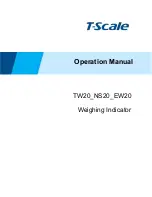
VNA concepts and features
R&S
®
ZNL/ZNLE
276
User Manual 1178.5966.02 ─ 19
Interpolation and extrapolation
The analyzer can interpolate and extrapolate power correction data so that a source or
receiver power calibration can be reused after a change of the frequency sweep range:
●
At new sweep points within the calibrated sweep range, interpolation is applied to
calculate the correction data. A label "PCai" in the trace list indicates an interpola-
ted power calibration.
●
At new sweep points outside the calibrated sweep range, the correction values are
extrapolated: Sweep points below the lowest calibrated frequency are assigned the
correction value of the lowest frequency. Sweep points above the highest calibra-
ted frequency are assigned the correction value of the highest frequency. A label
"PCax" in the trace list indicates an extrapolated power calibration.
9.5.6.4
Extended test setups
The power calibration data can be modified to account for an additional two-port device
in the test setup. The known transmission coefficients of the two-port can be entered
manually or automatically ([Cal] > "Power Cal Settings" > "Transm. Coefficients...").
The R&S
ZNL supports two different test scenarios.
A: Two-port at DUT (during measurement)
Test and measurement procedure:
1. Perform the calibration without the additional two-port. During the calibration, the
analyzer decreases the power sensor values by the 2-port transmission coefficients
to move the calibration plane of the power calibration towards the input of the DUT.
The calibration plane corresponds to the output of the 2-port which is placed in-
between the network analyzer port and the DUT.
2. Perform the measurement with the additional two-port.
Practical example:
On-wafer measurements. The power sensor cannot be directly
connected to the input of the DUT. The transmission coefficients of the wafer probe are
used for the power meter correction.
Calibration
















































